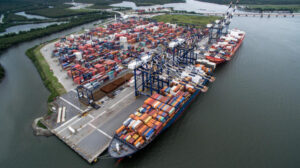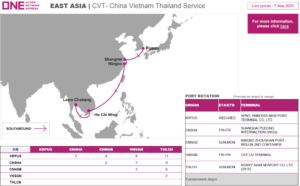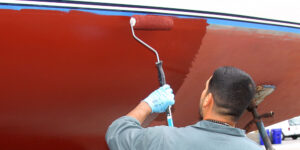The Maryland Department of Transportation Maryland Port Administration (MDOT MPA) will launch a study to address marine navigation at the Seagirt Loop channel and find ways to make the Port of Baltimore more accessible for mega-ships.
In a statement the Port said the MDOT had joined with the US Army Corps of Engineers (USACE) to complete the study, which will look at ways to increase capacity, efficiency and safety.
The channels in Baltimore Harbor that form the Seagirt Loop are authorized and maintained to depths varying from 42 to 51 feet. With these varying channel conditions, the study is needed to examine navigation efficiencies and transportation cost savings that could be gained improving the Seagirt Loop channel to better accommodate larger vessels, the Port said.
Under a cost-sharing agreement, the MDOT MPA and USACE will spend $3 million each on the study, which will specifically examine channel modifications including deepening, widening and modifying channel bends.
With its existing 50-foot deep channel and Neo-Panamax cranes, the Port of Baltimore is already able to accommodate some of the largest container ships in the world, and has experienced significant growth in containers in recent years.
Work is currently ongoing to deepen a second 50-foot berth that will allow two massive ships to visit the Port at the same time. That berth, and four new supersized cranes, are expected to be operational by summer 2021.
“The Port of Baltimore is a major economic generator for our state, and we continue to plan for its bright future,” said Governor Larry Hogan. “With the partnership of the Army Corps of Engineers, we are making improvements at the Seagirt Marine Terminal that will positively impact Maryland’s economy
and our job growth for years to come.”
USACE Baltimore District Commander Col. John Litz, also commented: “The Port of Baltimore is important to the national economy, and the U.S. Army Corps of Engineers is committed to working with our partners at the Maryland Port Administration to ensure that continues.
“This study will investigate how to safely and efficiently accommodate the growing number of larger container ships for years to come.”
MDOT Transportation Secretary Greg Slater said the study was “important” and that it could boost the regional supply chain and “provide a lasting benefit to Maryland’s economy and job growth”.
“The Army Corps of Engineers is a terrific partner for MDOT MPA on this project because we share a commitment to safety and the Port of Baltimore’s future success,” he said.
The Seagirt Loop is made up of the Seagirt West Branch Channel that tracks along the Seagirt Marine Terminal, and portions of Dundalk/Seagirt Connecting Channel and West Dundalk Branch Channel. It connects to Fort McHenry Channel used by ships entering and exiting the harbour.









